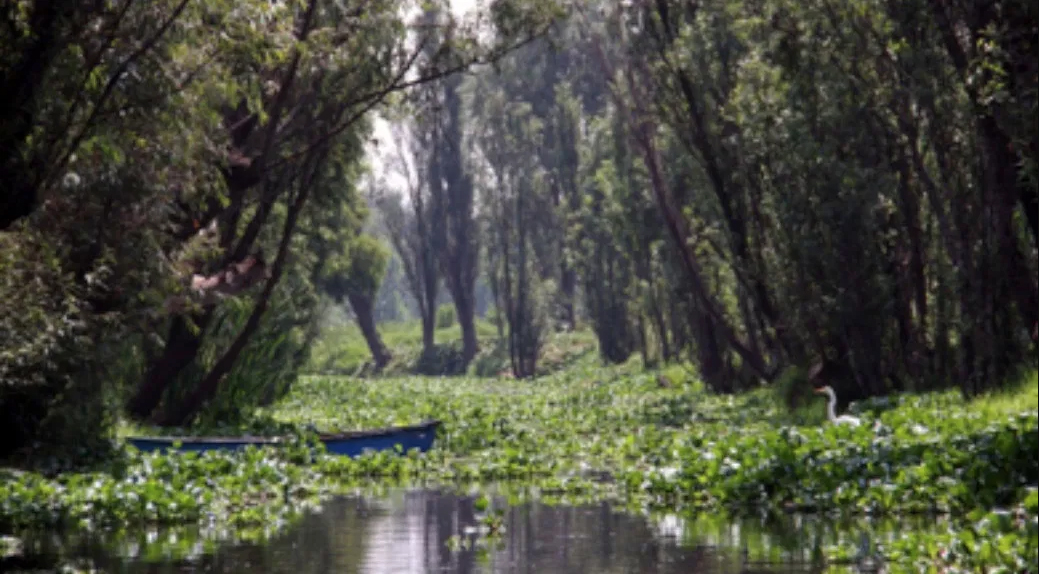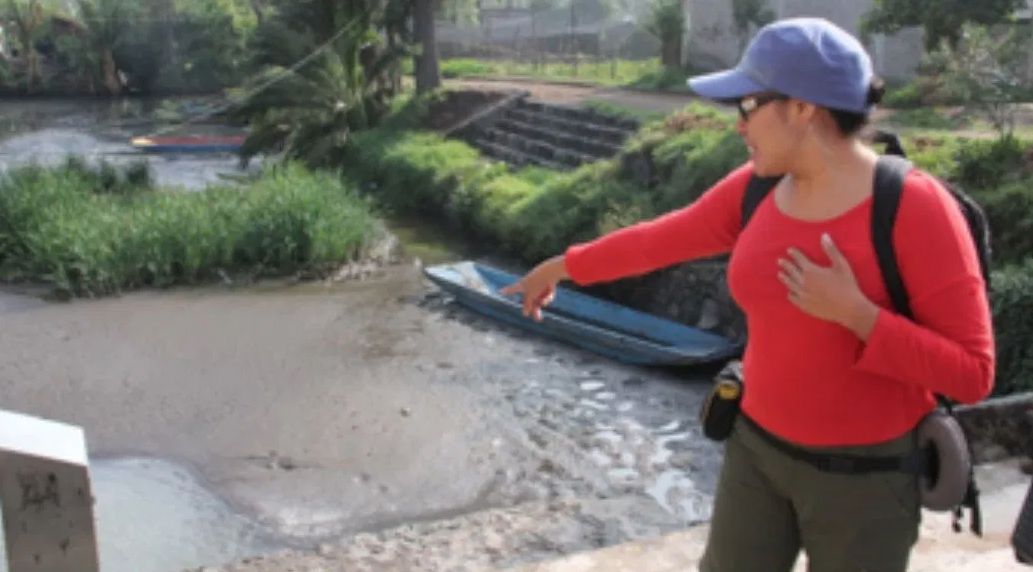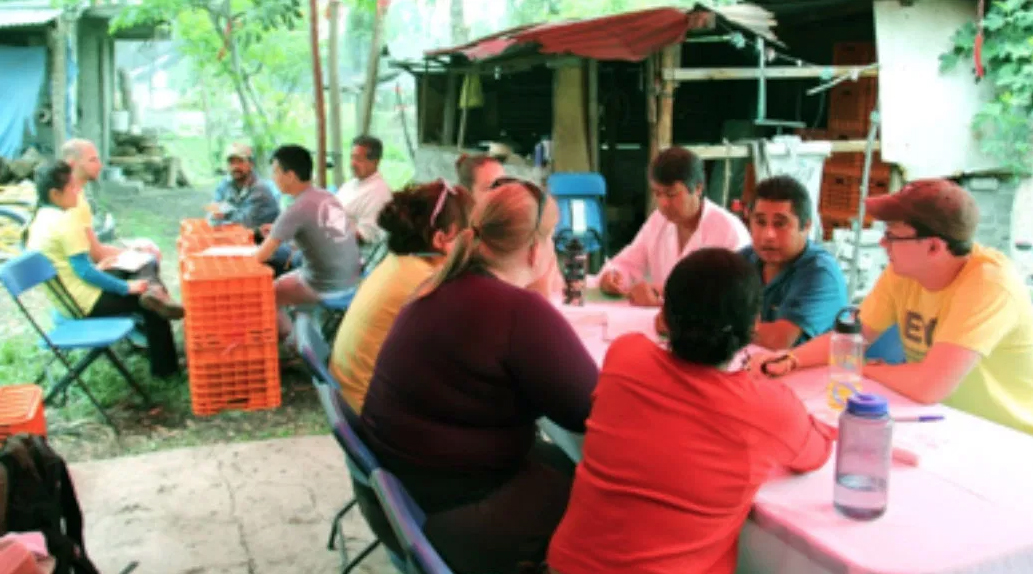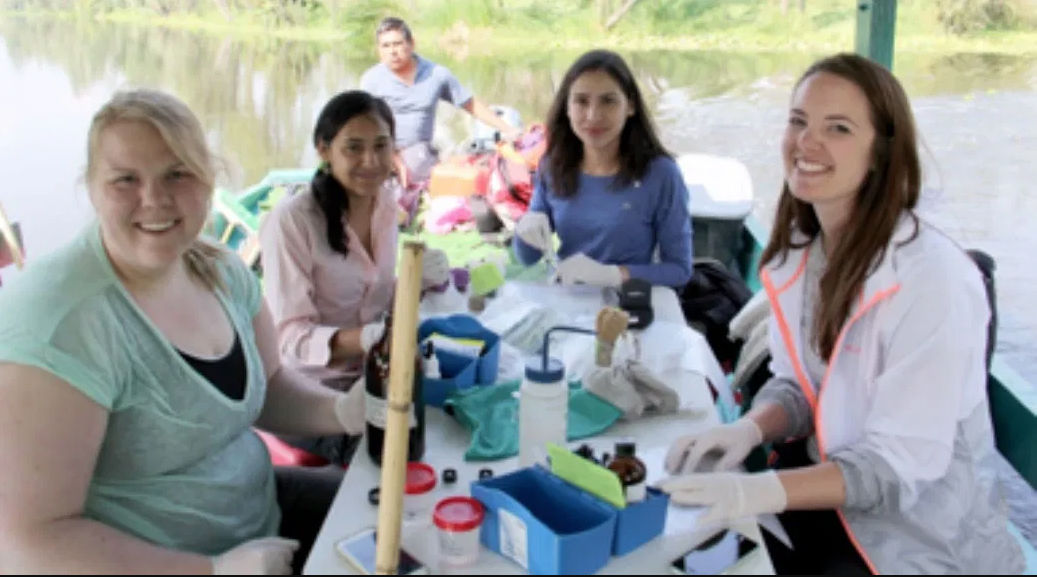.
Growing greens and going green in Mexico’s wetlands
By Carly Toyzan, EY Earthwatch Ambassador
In May, Carly Toyzan, an EY Earthwatch Ambassador, traveled to Xochimilco, Mexico, to support local farmers with their businesses while monitoring water quality and promoting sustainable agriculture.
Not even 20 miles south of Mexico City, Xochimilco is a vast wetlands system that’s home to more than 140 species of migratory birds as well as native species, such as the axolotl—a salamander so historically revered that it is the hero of local legends. I traveled to the axolotl’s turf as part of the EY Earthwatch Ambassadors program. While conservation efforts are critical here because of the increasing threats to animals, plants and the overall ecosystem, my team’s time in Xochimilco centered primarily on its people.
During the expedition, we navigated Xochimilco’s maze of canals and lakes with farmers who grow crops on small plots called chinampas. The Aztecs started farming in the chinampas more than 500 years ago, but recently, many farmers have traded the traditional methods for agrochemicals, greenhouses, and greater profits. The resulting pollution paired with that of urbanization has negative effects on water quality, which is where Earthwatch researchers come in.
Scientists working with Restauración Ecológica y Desarrollo, A.C. (REDES), a local nonprofit, have been monitoring water quality and teaching farmers about the importance of sustainable agriculture.
.
Some farmers are already on board, but to convince others, they need ways to improve business practices. And that’s where EY comes in.
.

Farmers use Xochimilco’s canals to travel and transport produce, but they’re also home to a variety of plants and animals.
.
Business can sow seeds of change
At EY, we have a long history of supporting entrepreneurs because we recognize the positive effects they have in our communities, and that is true about the farmers, whose support of Earthwatch and REDES’ work is crucial to positive change. For our skills-based project, a unique aspect of the EY Earthwatch program, we got to know 12 farmers who are the leaders among hundreds in a part-urban, part-rural cluster of chinampas called San Gregorio.
.

REDES employee Citlalli Gonzalez Hernandez explains how pollution problems are compounded where chinampas sit next to urban areas.
.
During our first two days, we interviewed the farmers about their challenges and toured some of their chinampas to see firsthand how they’re growing greens and other products despite complex problems stemming from the troubled water supply. The following days, we spent our afternoons and evenings developing recommendations for growing their business and committing to sustainability.
After hearing their stories, enjoying their fresh products for lunch, and seeing their passion for preserving the area and tradition, we wanted to help address all their concerns. But with only a few days, we focused on simple tips for strengthening their organization, developing a brand, and reaching new markets.
.

The EY team holds small group interviews with local farmers to learn about their business challenges and vision for the future.
.
Research provides the foundation
When we weren’t working on our skills-based project, we were diving into the water-quality research with Earthwatch and REDES. Most days we traveled by boat to our sample sites, but we also hiked through a few of the more urban chinampas to reach a total of 8 collection points. As part of their multiyear study, REDES returns to these points and 14 others each dry and wet season.
I was amazed by the variety and amount of data we could gather: dissolved oxygen, temperature, pH, conductivity, turbidity, nitrates, phosphates, bacteria, heavy metals, and biological indicators. I can’t offer scientific conclusions, but I can say definitively that spending the morning in a floating science lab was an exciting change of pace from my corporate office environment.
.

.
During our last day in Xochimilco, we provided tips and strategies from the skills-based project, and REDES presented results from our field research. The farmers listened intently, took notes and asked questions. They were curious how the results can be used to approach government officials, Xochimilco citizens and other chinamperos and to make the case for sustainable methods.
Interacting with people in the community who are affecting and affected by the research was a special part of our EY Earthwatch experience in Mexico. We saw where environmental researchers, business-minded farmers, government and the community are intersecting and why there is a dire need to get them flowing in the same direction—toward conserving this ecosystem.
.

The EY team, Earthwatch, REDES employees and farmers gathered for the final time at the REDES experimental chinampa in Xochimilco.
.
Water isn’t sexy, but it is essential
As I share my experience with family, friends and colleagues, I keep wondering how to get people interested in this project in a way that will intrigue and inspire them.
.
Where I’m from, water isn’t sexy. It doesn’t draw a wide-eyed reaction like, say, penguins in Patagonia or lion prides in Kenya. Water is familiar—we drink it; we play in it; we use it for cooking, cleaning and transportation. But the fact that it’s so essential to our everyday lives is exactly why I came to feel passionate about this project and why I hope others will want to learn more.
.
For some of us, conserving water may not seem as important as it is for those I met in Mexico—but, in a way, it is. If you’re not saving the native axolotl in Xochimilco, then you’re supporting the survival of a species closer to your home. You probably don’t have chinampas in your backyard, but agrochemicals may still be working their way into your water.
The research from Xochimilco is also part of a global Earthwatch project called FreshWater Watch. The program trains citizen scientists, like us, to collect data at more than 3,000 locations. It’s one way you can contribute to the health of our world’s fresh water and make a difference where you live.
.
Sign up for the Earthwatch Newsletter
Be the first to know about new expeditions, stories from the field, and exciting Earthwatch news.